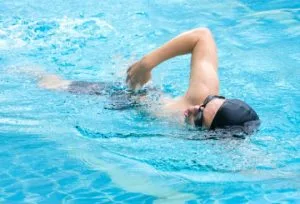Swimming is both an enjoyable activity and a life-saving skill. However, one of the biggest challenges when learning to swim is breath control. Learning to hold your breath underwater helps you avoid panic and improve your swimming technique. In this blog post, we’ll comprehensively answer the question of how to improve breath control while swimming . You’ll find detailed information on a wide range of topics, from breathing techniques to practical exercises.
The Importance of Breath Control in Swimming
Breathing correctly while swimming not only helps you stay afloat, but also improves your performance and endurance. Breath control helps you:
- You can swim longer: Proper breathing techniques allow your body to use oxygen more efficiently.
- You can swim faster: When you control your breathing, you reduce water resistance and can move faster.
- You can swim more comfortably: It reduces panic and anxiety, allowing you to enjoy swimming.
- You can improve your swimming technique: Proper breathing helps you improve your body position and movements.
Breathing Techniques in Swimming
There are different breathing techniques for different swimming styles. However, the basic principle is to inhale through your mouth outside the water and exhale through your nose underwater. Here are some breathing techniques for different swimming styles:
- Freestyle: To breathe in freestyle, you turn your head to the side and inhale quickly through your mouth. When exhaling, you should submerge your head in the water and exhale slowly through your nose and mouth.
- Backstroke: Breathing is easier in the backstroke because your face is always above water. However, you should still pay attention to breathing rhythmically.
- Breaststroke: To breathe in the breaststroke, you lift your head above the water. When inhaling, open your mouth wide and inhale quickly. When exhaling, submerge your head underwater and exhale slowly through your nose and mouth.
- Butterfly: Butterfly breathing is the most challenging. With each arm stroke, you must lift your head above the water and inhale quickly. On the exhale, you must submerge your head and exhale forcefully through your nose and mouth.
Exercises to Improve Breathing Control
There are many exercises you can do to improve your breathing control while swimming. Here are some examples:
- Underwater breath holding: Hold your breath underwater for as long as possible by holding onto the edge of a pool or squatting on the ground. Aim to increase your breath holding time over time.
- Breathing exercises: Practice exhaling slowly and controlled breaths through your nose underwater. You can also try exercises like blowing bubbles or blowing into the water.
- Rhythmic breathing: Standing or walking by the pool, practice breathing in and out with a rhythm. For example, you might inhale for two steps and exhale for four steps.
- Using a kickboard: Swim with only your legs using a kickboard and practice your breathing technique. This will help you focus on your breathing and improve your technique.
Improving Breath Control with Swimming Course
Swimming lessons are the most effective way to improve your swimming skills, including breath control. With expert instructors, you can learn and practice proper techniques. You can also boost your motivation by working with other swimmers.
Statistics show that over 90% of swim course participants experience significant improvements in their breathing control and swimming skills. Therefore, if you’re looking to learn to swim or improve your breathing control, we highly recommend taking a swim course.
Frequently Asked Questions
1. How wide should I open my mouth when breathing while swimming?
When breathing, you should open your mouth wide and breathe in quickly. This will allow you to take in enough oxygen in a short time.
2. How long can I hold my breath?
The duration of breath holding varies from person to person. You can start with short periods and gradually increase the duration. However, never force yourself, and if you feel any discomfort, take a breath immediately.
3. What should I do if I panic while swimming?
If you panic, try to calm down and take deep breaths. You can hold on to the edge of the pool or roll over onto your back and rest. If necessary, seek help.
4. Which swimming style is easier for breathing?
Backstroke is the easiest stroke for breathing because your face is always out of the water.
5. How long should I work on improving my breathing control?
Developing breathing control takes time and practice. By practicing regularly and using the right techniques, you can make progress over time.
Breath Control in Swimming: Conclusion
Breath control in swimming is a cornerstone of becoming a successful swimmer. By learning proper breathing techniques, you can improve your performance, build endurance, and enjoy swimming. Remember, practice makes perfect! So, practice regularly and give yourself time.
We hope this article has answered the question of how to improve breath control in swimming in detail. If you’d like to learn to swim or seek professional support to improve your breath control, please contact us to learn about our swimming courses.



